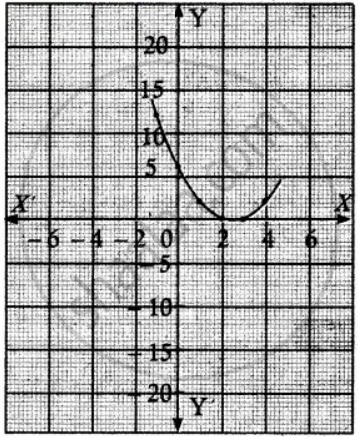Advertisements
Advertisements
प्रश्न
Discuss the maximum possible number of positive and negative roots of the polynomial equations x2 – 5x + 6 and x2 – 5x + 16. Also, draw a rough sketch of the graphs
उत्तर
y = x2 – 5x + 6
x = 1, y = 1 – 5 + 6 = 2
x = 2, y = 4 – 10 + 6 = 0
x = 0, y = 6
x = 3, y = 9 – 15 + 6 = 0
x = – 1, y = 1 + 5 + 6 = 12
x = 4, y = 16 – 20 + 6 = 2
(1, 2), (0, 6), (– 1, 12)
P(x) = (x2 + 5x + 6)(x2 – 5x + 16)
= x4 – 5x3 + 16x2 – 5x3 + 25x2 – 80x + 6x2 – 30x + 96
= 0
= x4 – 10x3 + 47x2 – 110x + 96 = 0
It has two sign changes
∴ It has two positive real roots
P(– x) = x4 + 10x3 + 47x2 + 110x + 96
It has no sign change, no negative real roots
y = x2 – 5x + 16
| x | 0 | 1 | –1 | 2 | 4 |
| y | 16 | 12 | 23 | 10 | 12 |

APPEARS IN
संबंधित प्रश्न
Discuss the maximum possible number of positive and negative roots of the polynomial equation 9x9 – 4x8 + 4x7 – 3x6 + 2x5 + x3 + 7x2 + 7x + 2 = 0
Show that the equation x9 – 5x5 + 4x4 + 2x2 + 1 = 0 has atleast 6 imaginary solutions
Determine the number of positive and negative roots of the equation x9 – 5x8 – 14x7 = 0
Find the exact number of real zeros and imaginary of the polynomial x9 + 9x7 + 7x5 + 5x3 + 3x
Choose the correct alternative:
The number of real numbers in [0, 2π] satisfying sin4x – 2 sin2x + 1 is
